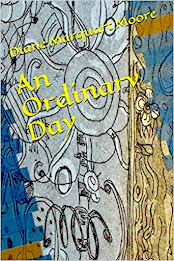Shortly before I
invited guests to dinner two weeks ago, we received another original glass
piece from Karen Bourque to hang in the dining room window, a beautiful picture
of the lotus flower composed of pink pearly shells, amber, and green glass. Karen,
who lives in Churchpoint, Louisiana, has created glass pieces for numerous
homes throughout Acadiana and large, commissioned pieces for the Louisiana Book Festival and the Ernest J. Gaines Center at the University of Louisiana at
Lafayette.
Karen explains
that in this latest picture she tried to capture the lotus as a universal
symbol, the primary theme being one of rebirth and purity. She drew the
symbolism from Buddhist and Hindu traditions --the symbol of the fully-opened
pink lotus, which is considered to be the true lotus of the Buddha.
In the legend that
accompanies Karen’s work of art, she says that the pink pearly shells used for
the petals of the plant strengthen intuition, sensitivity, and imagination,
adding that they also attract prosperity and wealth. The amber which she used
for the flower’s stamen is believed to be a healing stone and brings blessings.
It also helps dreams to become reality and calms those who
suffer from hyperactivity and stress. An added bonus: the amber transmutes
humor and joy, two qualities that should be a part of any household, especially
at the dinner table!
We love the
three glass pieces that hang in the dining room, especially when the morning
light streams through the windows and illuminates the various glass colors and
stones imbedded in the pieces of art. The green colors in this latest work of
art are particularly brilliant all day.
The Lotus was a
gift to my friend, Victoria Sullivan, who is a botanist and who has spent
endless hours programming and designing my books of poetry for her independent
press, Border Press. She writes about the lotus plant in Why Water Plants Don’t Drown, a book about
water plants for which Susan Elliott of Pinyon Publishing rendered the lovely
illustrations, which was published by Pinyon last year.
In this
biological and ecological text, Vickie relates that the pale pink flowers of
sacred lotus are the largest and most spectacular of any water plants. A “floater,”
as Vickie calls floating leaf plants, the lotus is native to India and is
widely cultivated. She writes: “Buried seeds of the sacred lotus found in
Manchuria were able to germinate after 200 years, and seeds may survive
hundreds or even a thousand years.” Karen loved Susan’s colorful interpretations
of the plants in Why Water Plants Don’t Drown and was inspired to render several
botanical glass representations after reading this book about aquatic and
wetland plants.
Karen says that
in the Christian religion, the waterlily, a variant of the lotus, was presented
to Mary by the Archangel Gabriel at the Annunciation. It also represents
enlightenment and is associated with the consciousness of those people who have
reached Nirvana. Most of her glass pieces contain stones, gems, and colored glass
that represent spiritual values—creation and regeneration are recurring themes.
She encases the written explanations for the art work in a transparent sleeve
that accompanies each piece she completes.
In the fall when
we return to New Iberia, we hope to make our annual pilgrimage to Churchpoint
to view Karen’s latest work and to visit with her and her husband, Darrell
Bourque, former poet laureate of Louisiana. Darrell’s latest book, Megan’s Guitar and Other Poems from Acadie is currently making a big splash
in Teche country. Salut to all of
these talented artists and writers!





.jpg)

















